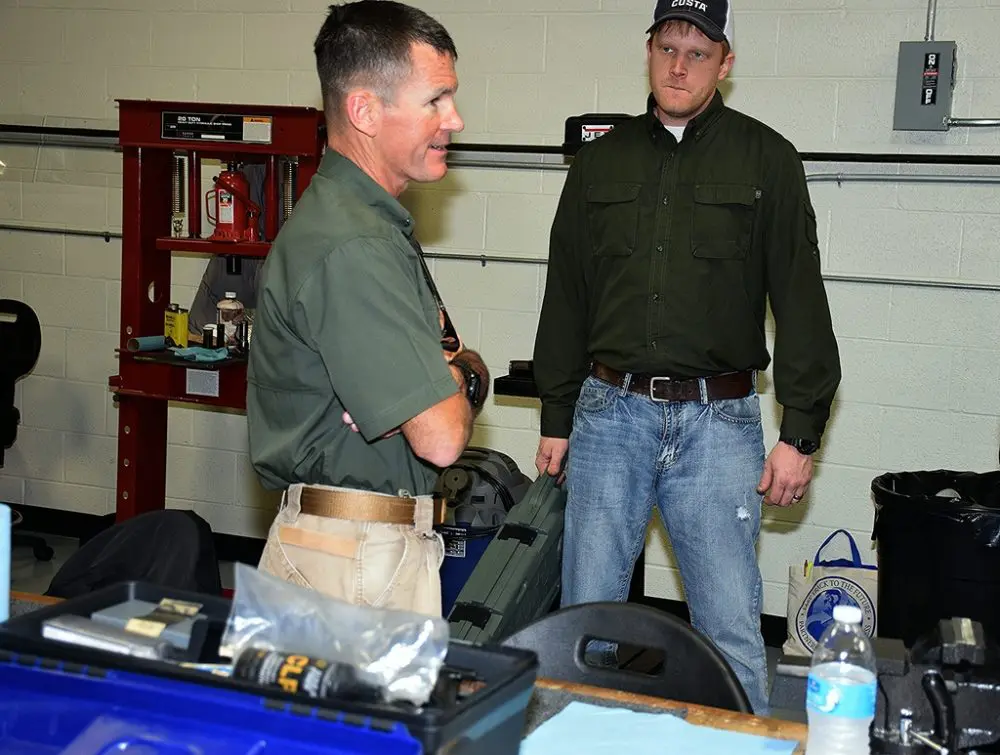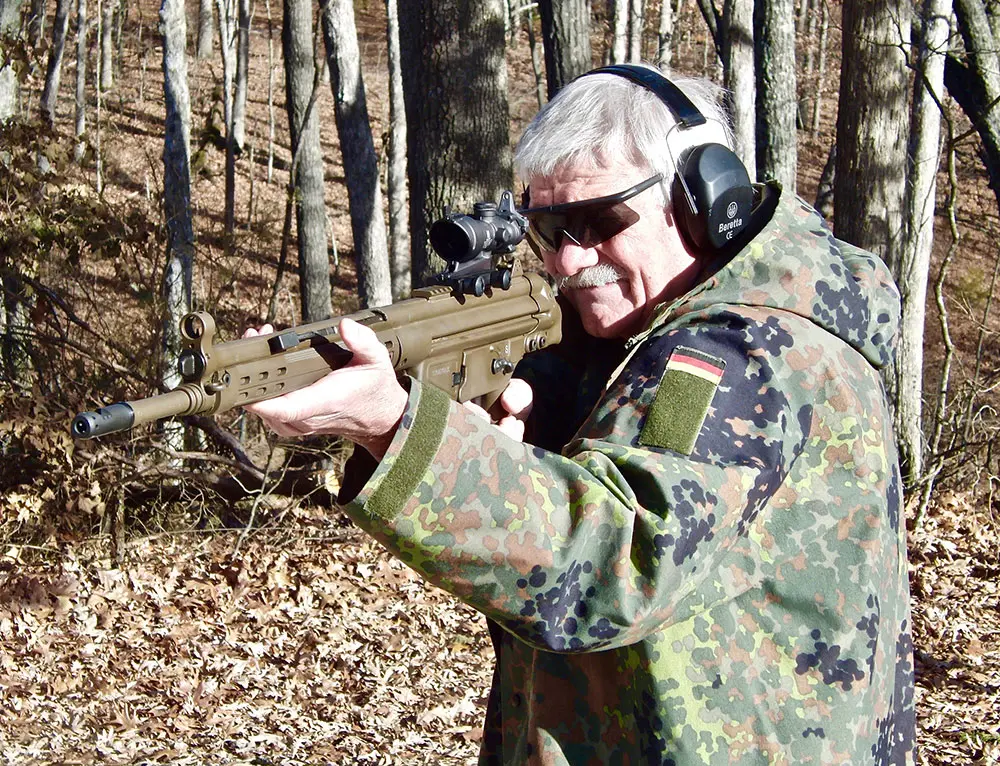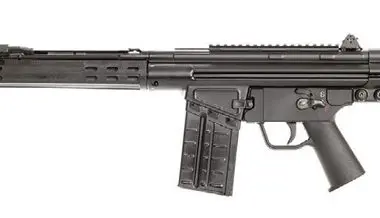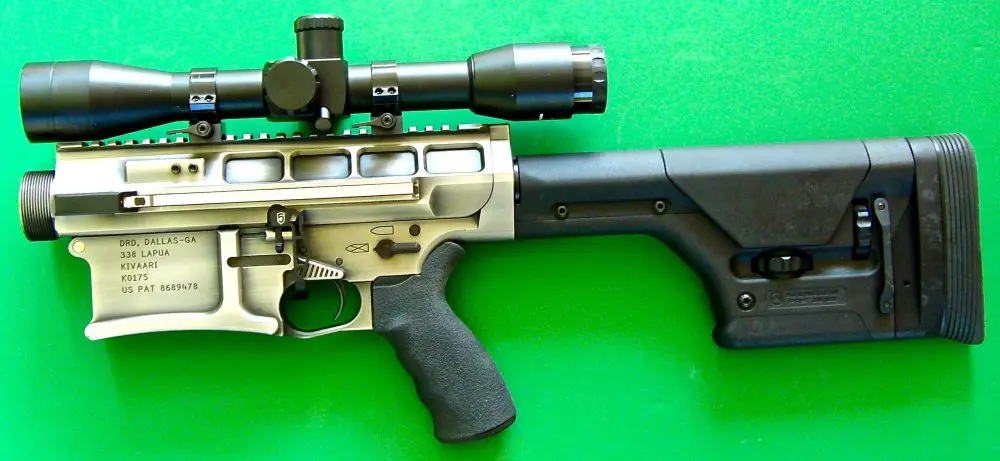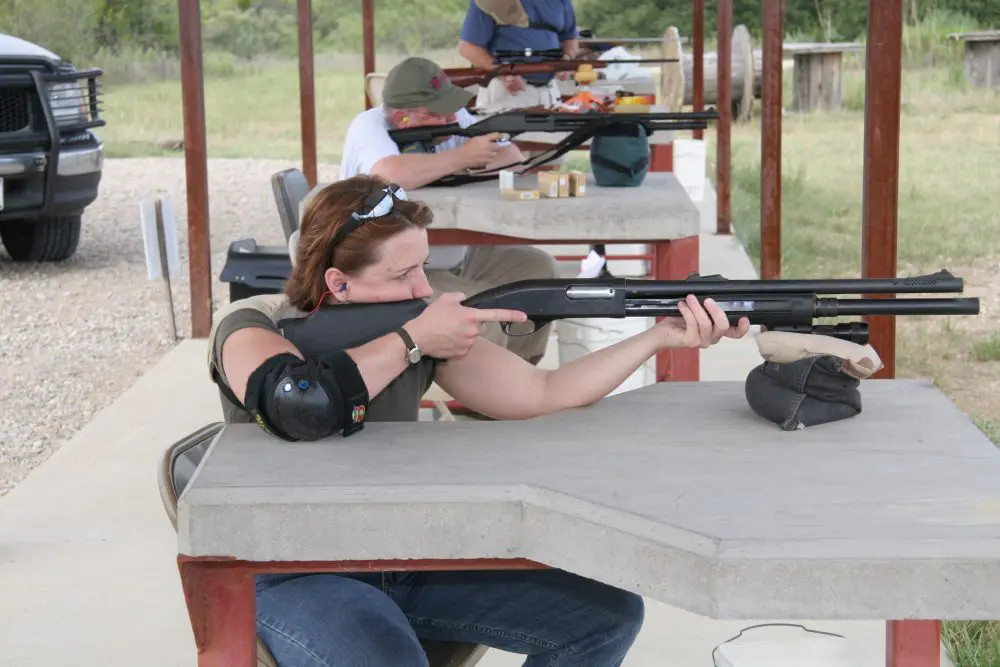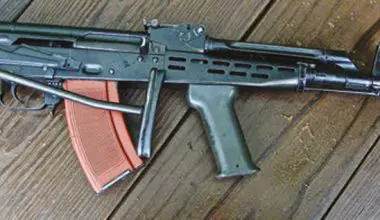Many of you reading this may assume that mini red dot sights are best suited for use on pistols. They are good for that task, and I have used one on my FNX .45 Tactical. However, they can be very effective on long guns.
An Army friend mentioned that he had seen SOCOM operators using mini red dots on SMGs and carbines, so I checked with friends in the spec ops community and found that was indeed true.
In many cases, the mini red dots were piggybacked onto a larger optical sight, as with the Trijicon TA31F-RMR. This is a good combo because it offers Trijicon’s 4X ACOG for long-range usage and mini red dot for CQC.
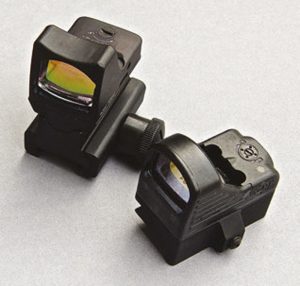
I asked my contact if any of the operators were using the minis mounted on a side rail as some competitive shooters do, but he said no. Some were, however, using the mini red dots as standalone sights.
At least partially after learning of the military usage, I’ve tried the mini red dots on rifles, carbines, SMGs, and shotguns, and have found they work surprisingly well given their size.
I generally like Trijicon ACOGs better than red dots for my M4s and other combat carbines, though I do use red dots on some carbines I plan to shoot, mostly at 50 yards or less. I have found when trying mini red dots on the M4 that I actually can acquire and see these red dots better than with some of the larger red dot sights. It may be my cheek weld on an M4 stock or my eyes.
I had heard especially good things about the Aimpoint Micro T-1 from a contact in the special ops community, so I tried it on various weapons and liked it. Right now I have it mounted on my FNH FS2000. For me, it works quite well with the bullpup carbine. When I plan to shoot the FS2000 at longer range, I switch it out for a Valdada Pit Bull or another scope.
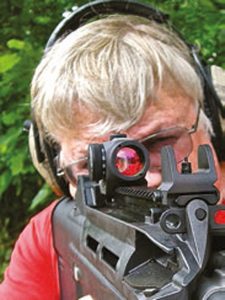
I’ve also mounted the T-1 on a couple of shotguns and found it dandy for that usage. In fact, I especially like the minis on shotguns because they don’t take up much room on what are often short rails, and they don’t stick up too much.
I have seen some military use of the mini red dots as an adjunct close-range sight on sniping rifles. I guess this makes sense if an enemy stumbles on the sniper hide, though the observer’s M-14-based DMR would seem to be the most logical weapon in that case. Still, the little red dot does give the sniper some CQC capability.
Mini red dots are very useful on submachine guns. Back in the day, I fired the MP5 with the Schmidt & Bender or Hensoldt 4X scope mounted and found that for me, it threw the balance off— not drastically but enough that the SMG didn’t feel as lively in the hands.
I’ve also fired SMGs with the EOTech mounted, which worked well, but in my opinion added one more thing to catch during a tubular assault or when moving through a door. My experience has been that I shoot just as well with one of the mini red dots on an SMG as with a larger one, so I would choose the one that takes up less real estate on a rail and weighs less.
I have not used a mini red dot on an SMG setup for IR, so can’t comment on their effectiveness. But I will comment on the three mini red dot sights I have used and found effective.
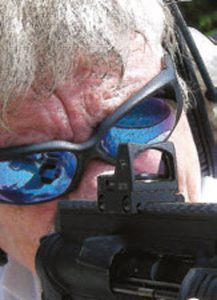
Insight Technology’s MRDS (Mini Red Dot Sight) was developed with military users in mind, and hence has some excellent features. The MRDS is a passive red-dot reflex sight. Its manual and automatic intensity settings allow adjustment for ambient light and use with NVDs.
A useful feature for the combat soldier is the top-loading battery compartment, which allows a battery change while leaving the MRDS mounted, thus retaining its zero.
Another interesting use of the MRDS is for mounting on Insight’s BSM (Ballistic Sighting Module), which is used for precision firing of the M203 or other launchers.
With the MRDS and other red dots, the ability to turn the brightness down helps with my astigmatism, since I see red dots as three images. On a smaller dot at a lower setting, this is much less noticeable.
Right now I’m using the MRDS on my Mossberg 590A1 shotgun.
Another mini red dot with which I’ve been quite happy is Trijicon’s RMR. Three versions of the RMR are available: RMR LED, RMR Adjustable LED, and RMR Dual-Illuminated.
Although I normally use Trijicon’s dual illuminated optical sights, especially the ACOGs, the RMR Dual-Illuminated is only available with yellow dots or triangle. I do not see these as well as I do red dots, so I prefer the RMR LED versions.
They are available with three sizes of dots: 3.25, 6.5, and 8.0 MOA. I prefer the 3.25 MOA version because it allows more precision at ranges to 50 yards or so, and I can see it better, as discussed above.
Both the MRDS and RMR are built to military specs and have proven very durable in my experience with them on an array of weapons. To be honest, my experience is that most optical sights get damaged from being banged around, and the minis make a smaller, harderto- hit target for things that would like to bang them.
The final mini I’d like to discuss is Aimpoint’s Micro T-1. At Blackwater several years ago, someone told me that the SEALs had bought some Micro T-1s and were using them on just about anything that shot.
The Micro T-1 uses an LED red dot of either 2 or 4 MOA. It also uses Aimpoint’s ACET (Advance Circuit Efficiency Technology). This is the technology used on various Aimpont military and law enforcement sights, which allows them to use very little power and last up to 50,000 hours—with the optic turned on.
The T-1’s eight daylight settings include one that is extra bright. There are also four NVD settings. Another feature that may have appealed to the SEALs is water resistance to 25 meters. All of this is achieved in a unit that is 2.4 inches long, 2.4 inches wide and 1.6 inches high including the mount. It weighs 3.7 ounces with the mount.
I use all three of these mini red dots for gun tests. The biggest problem is that when I use one on a gun of my own, I get it zeroed and then don’t want to remove it.
What makes them so appealing is that they are versatile and compact, which has caused me to use them on everything from .22 trainers to .308 battle rifles.
As long as the user knows their limitations, they are very effective little optical sights.
